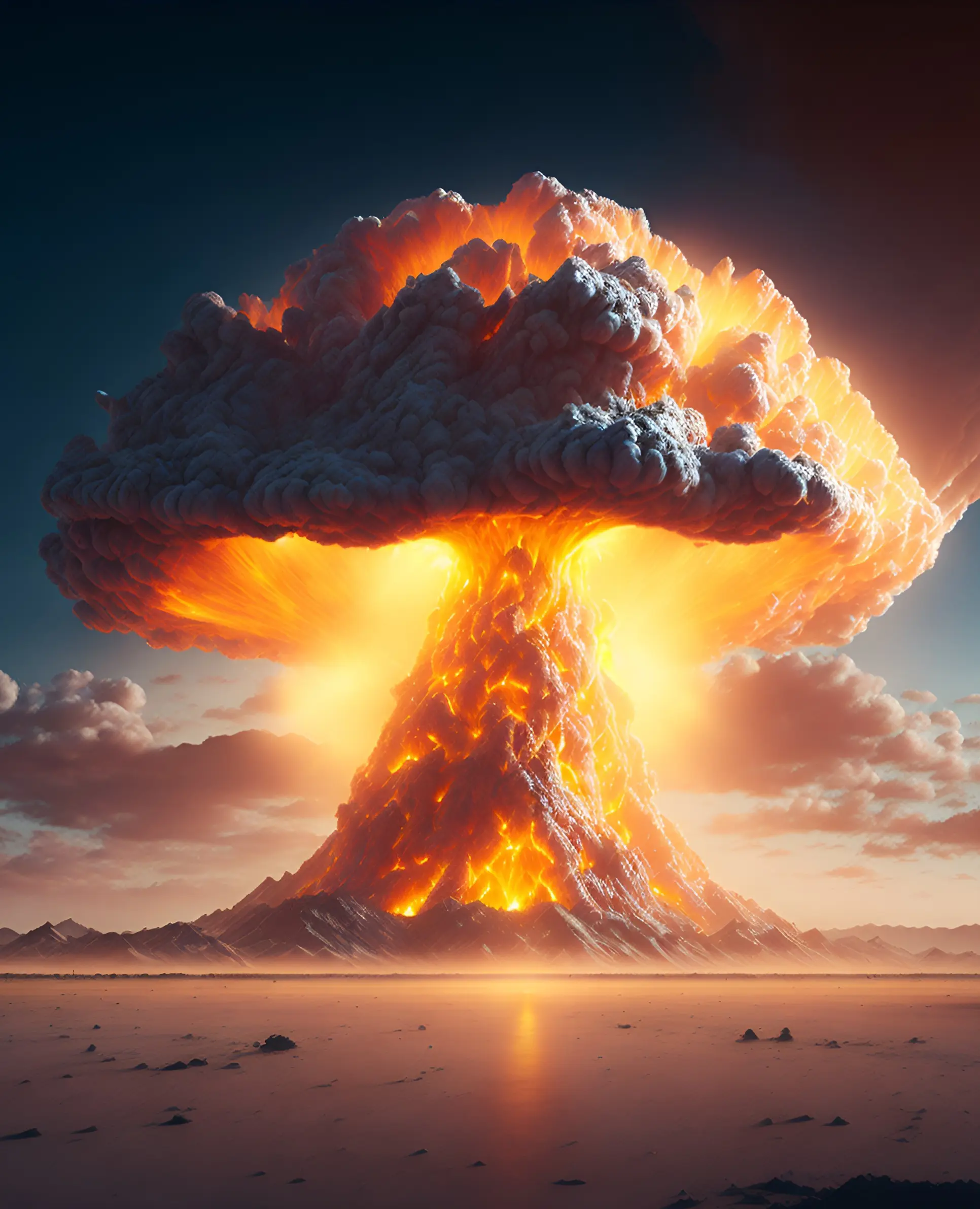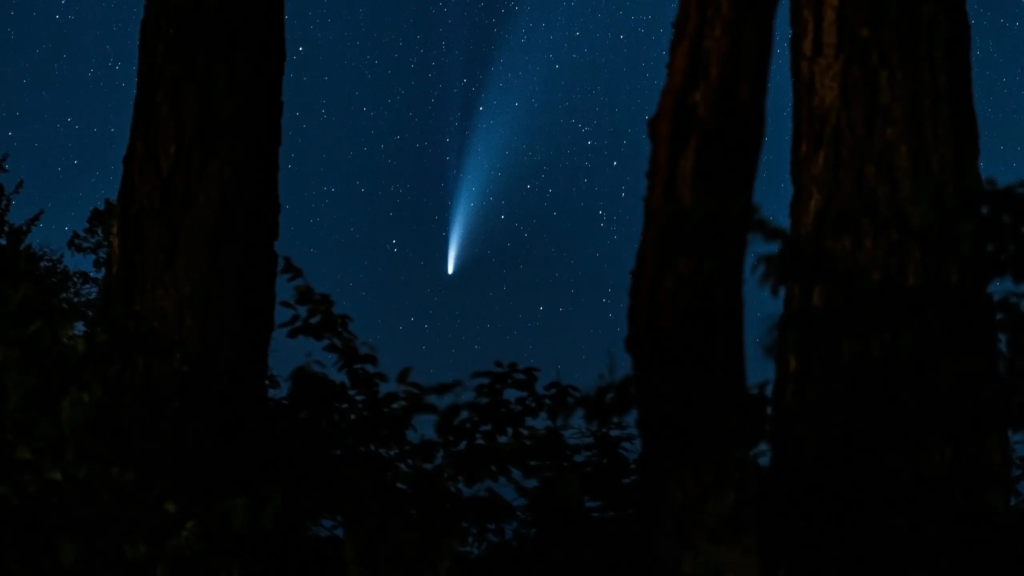Introduction
The Tunguska Event, a cataclysmic explosion that occurred in the remote Siberian wilderness on June 30, 1908, has baffled scientists and researchers for over a century. This mysterious event left a lasting impact on the landscape and ignited a plethora of theories attempting to explain its origins. In this essay, we will delve into the history of the Tunguska Event and explore various hypotheses put forth by scientists and researchers in an effort to unravel the mysteries surrounding this enigmatic occurrence.
Historical Background
The Tunguska Event took place near the Tunguska River in Siberia, Russia. The explosion, estimated to be equivalent to 10-15 megatons of TNT, flattened an estimated 80 million trees over an area of 2,150 square kilometres. The blast was so powerful that it could be heard over 800 kilometres away, and eyewitnesses reported seeing a bright, glowing sky for several nights following the event.
The remote location of the explosion meant that the initial investigation was delayed, and it wasn’t until 1927 that a Soviet scientific expedition led by Leonid Kulik was able to reach the site. Kulik’s team discovered a vast area of scorched and flattened trees, with the epicentre of the blast appearing to be devoid of any significant impact crater. The absence of a visible crater only deepened the mystery surrounding the Tunguska Event.
Possible Explanations
The absence of a crater at the epicentre posed a significant challenge for scientists trying to understand the nature of the Tunguska Event. Over the years, numerous theories have been proposed, ranging from extra-terrestrial origins to more down-to-earth explanations. Let’s explore some of the most prominent hypotheses.
1. Cometary Impact
One of the early and enduring theories is that a comet was responsible for the Tunguska Event. Proponents of this hypothesis argue that a comet, composed largely of ice and dust, entered Earth’s atmosphere and exploded in an airburst before reaching the ground. The lack of a visible impact crater could be explained by the complete disintegration of the comet in the atmosphere.
However, this theory has faced challenges in terms of the lack of typical comet-related chemical signatures in the soil samples collected from the Tunguska region. Additionally, the absence of large fragments or an identifiable impact crater contradicts what is commonly observed in the aftermath of comet or asteroid impacts.
2. Asteroidal Impact
An alternative theory suggests that the Tunguska Event was caused by the impact of a small asteroid. Similar to the comet hypothesis, proponents argue that the asteroid disintegrated in the atmosphere before reaching the ground, thus explaining the lack of a visible crater.
This theory gained some traction due to the discovery of microscopic silicate and magnetite spheres in the soil samples collected from the blast site. These spheres, known as “spherules,” are believed to have formed during the intense heat and pressure generated by an explosion. However, conclusive evidence linking these spherules to an asteroid impact remains elusive.
3. Nuclear Explosion
During the Cold War era, when nuclear weapons testing was at its peak, some scientists proposed the controversial idea that the Tunguska Event was caused by a nuclear explosion. This theory suggested that a nuclear-powered spacecraft or an experimental nuclear device exploded in the atmosphere, resulting in the devastation observed in Siberia.
However, this hypothesis lacks substantial evidence and is widely discredited. The absence of radioactive isotopes associated with nuclear explosions in the Tunguska region contradicts the nuclear explosion theory.
4. Black Hole Passage
In the realm of more exotic explanations, some scientists have proposed the idea that a microscopic black hole passed through Earth, causing the Tunguska Event. According to this hypothesis, the black hole would have interacted with Earth’s atmosphere, creating an explosion without leaving a significant impact crater.
While the concept of a microscopic black hole passing through Earth is theoretically possible, there is no empirical evidence to support this idea. The lack of observational data and the extreme rarity of such events make this hypothesis highly speculative.
5. Tesla’s Wardenclyffe Tower Experiments
In a more unconventional vein, some theories link the Tunguska Event to the experimental work of Nikola Tesla. Some proponents suggest that Tesla’s Wardenclyffe Tower, an experimental wireless transmission station, could have played a role in triggering the explosion. According to this hypothesis, Tesla’s experiments with high-frequency electromagnetic waves may have inadvertently caused the atmospheric detonation.
This theory lacks scientific support and is often dismissed as a speculative and unlikely explanation for the Tunguska Event. The lack of a clear causal link between Tesla’s experiments and the observed explosion diminishes the credibility of this hypothesis.
Conclusion
The Tunguska Event remains one of the most intriguing mysteries in scientific history, captivating the imagination of researchers and enthusiasts alike. Despite a century of investigations, the precise cause of the explosion continues to elude conclusive determination. The absence of a visible impact crater and the scarcity of unequivocal evidence have fuelled a diverse range of hypotheses, each with its own strengths and weaknesses.
While the cometary and asteroidal impact theories have gained prominence, the lack of definitive evidence has prevented the scientific community from reaching a consensus on the true nature of the Tunguska Event. Theories involving nuclear explosions, black holes, and Tesla’s experiments, though intriguing, lack the empirical support required for widespread acceptance.
The quest to unravel the mysteries of the Tunguska Event persists, driven by advancements in technology and a deeper understanding of celestial phenomena. Ongoing research, including the analysis of soil samples, improved modelling techniques, and satellite observations, may eventually shed light on the true origin of this enigmatic explosion. Until then, the Tunguska Event will continue to occupy a unique place in the annals of scientific inquiry, reminding us of the vastness of the cosmos and the mysteries that await exploration.

Geolocation: 62.231779293, 101.83120861
Further Reading: Coming Soon
Photo Credits: Pete Linforth, Shlomo Shalev
Introduction
The Tunguska Event, a cataclysmic explosion that occurred in the remote Siberian wilderness on June 30, 1908, has baffled scientists and researchers for over a century. This mysterious event left a lasting impact on the landscape and ignited a plethora of theories attempting to explain its origins. In this essay, we will delve into the history of the Tunguska Event and explore various hypotheses put forth by scientists and researchers in an effort to unravel the mysteries surrounding this enigmatic occurrence.
Historical Background
The Tunguska Event took place near the Tunguska River in Siberia, Russia. The explosion, estimated to be equivalent to 10-15 megatons of TNT, flattened an estimated 80 million trees over an area of 2,150 square kilometres. The blast was so powerful that it could be heard over 800 kilometres away, and eyewitnesses reported seeing a bright, glowing sky for several nights following the event.
The remote location of the explosion meant that the initial investigation was delayed, and it wasn’t until 1927 that a Soviet scientific expedition led by Leonid Kulik was able to reach the site. Kulik’s team discovered a vast area of scorched and flattened trees, with the epicentre of the blast appearing to be devoid of any significant impact crater. The absence of a visible crater only deepened the mystery surrounding the Tunguska Event.

Possible Explanations
The absence of a crater at the epicentre posed a significant challenge for scientists trying to understand the nature of the Tunguska Event. Over the years, numerous theories have been proposed, ranging from extra-terrestrial origins to more down-to-earth explanations. Let’s explore some of the most prominent hypotheses.
1. Cometary Impact
One of the early and enduring theories is that a comet was responsible for the Tunguska Event. Proponents of this hypothesis argue that a comet, composed largely of ice and dust, entered Earth’s atmosphere and exploded in an airburst before reaching the ground. The lack of a visible impact crater could be explained by the complete disintegration of the comet in the atmosphere.
However, this theory has faced challenges in terms of the lack of typical comet-related chemical signatures in the soil samples collected from the Tunguska region. Additionally, the absence of large fragments or an identifiable impact crater contradicts what is commonly observed in the aftermath of comet or asteroid impacts.
2. Asteroidal Impact
An alternative theory suggests that the Tunguska Event was caused by the impact of a small asteroid. Similar to the comet hypothesis, proponents argue that the asteroid disintegrated in the atmosphere before reaching the ground, thus explaining the lack of a visible crater.
This theory gained some traction due to the discovery of microscopic silicate and magnetite spheres in the soil samples collected from the blast site. These spheres, known as “spherules,” are believed to have formed during the intense heat and pressure generated by an explosion. However, conclusive evidence linking these spherules to an asteroid impact remains elusive.
3. Nuclear Explosion
During the Cold War era, when nuclear weapons testing was at its peak, some scientists proposed the controversial idea that the Tunguska Event was caused by a nuclear explosion. This theory suggested that a nuclear-powered spacecraft or an experimental nuclear device exploded in the atmosphere, resulting in the devastation observed in Siberia.
However, this hypothesis lacks substantial evidence and is widely discredited. The absence of radioactive isotopes associated with nuclear explosions in the Tunguska region contradicts the nuclear explosion theory.
4. Black Hole Passage
In the realm of more exotic explanations, some scientists have proposed the idea that a microscopic black hole passed through Earth, causing the Tunguska Event. According to this hypothesis, the black hole would have interacted with Earth’s atmosphere, creating an explosion without leaving a significant impact crater.
While the concept of a microscopic black hole passing through Earth is theoretically possible, there is no empirical evidence to support this idea. The lack of observational data and the extreme rarity of such events make this hypothesis highly speculative.
5. Tesla’s Wardenclyffe Tower Experiments
In a more unconventional vein, some theories link the Tunguska Event to the experimental work of Nikola Tesla. Some proponents suggest that Tesla’s Wardenclyffe Tower, an experimental wireless transmission station, could have played a role in triggering the explosion. According to this hypothesis, Tesla’s experiments with high-frequency electromagnetic waves may have inadvertently caused the atmospheric detonation.
This theory lacks scientific support and is often dismissed as a speculative and unlikely explanation for the Tunguska Event. The lack of a clear causal link between Tesla’s experiments and the observed explosion diminishes the credibility of this hypothesis.
Conclusion
The Tunguska Event remains one of the most intriguing mysteries in scientific history, captivating the imagination of researchers and enthusiasts alike. Despite a century of investigations, the precise cause of the explosion continues to elude conclusive determination. The absence of a visible impact crater and the scarcity of unequivocal evidence have fuelled a diverse range of hypotheses, each with its own strengths and weaknesses.
While the cometary and asteroidal impact theories have gained prominence, the lack of definitive evidence has prevented the scientific community from reaching a consensus on the true nature of the Tunguska Event. Theories involving nuclear explosions, black holes, and Tesla’s experiments, though intriguing, lack the empirical support required for widespread acceptance.
The quest to unravel the mysteries of the Tunguska Event persists, driven by advancements in technology and a deeper understanding of celestial phenomena. Ongoing research, including the analysis of soil samples, improved modelling techniques, and satellite observations, may eventually shed light on the true origin of this enigmatic explosion. Until then, the Tunguska Event will continue to occupy a unique place in the annals of scientific inquiry, reminding us of the vastness of the cosmos and the mysteries that await exploration.

Geolocation: 62.231779293, 101.83120861
Further Reading: Coming Soon
Photo Credits: Pete Linforth, Shlomo Shalev
